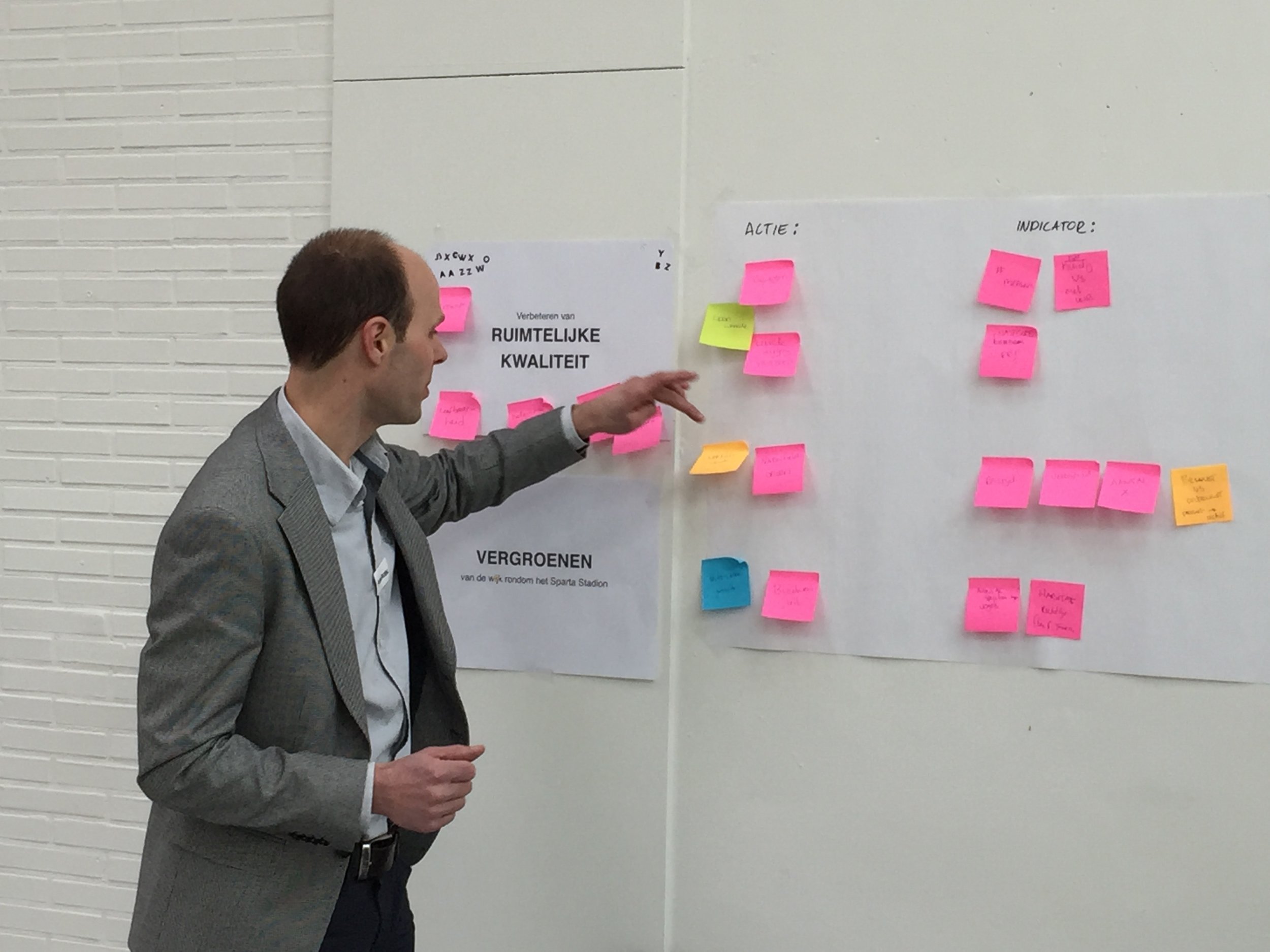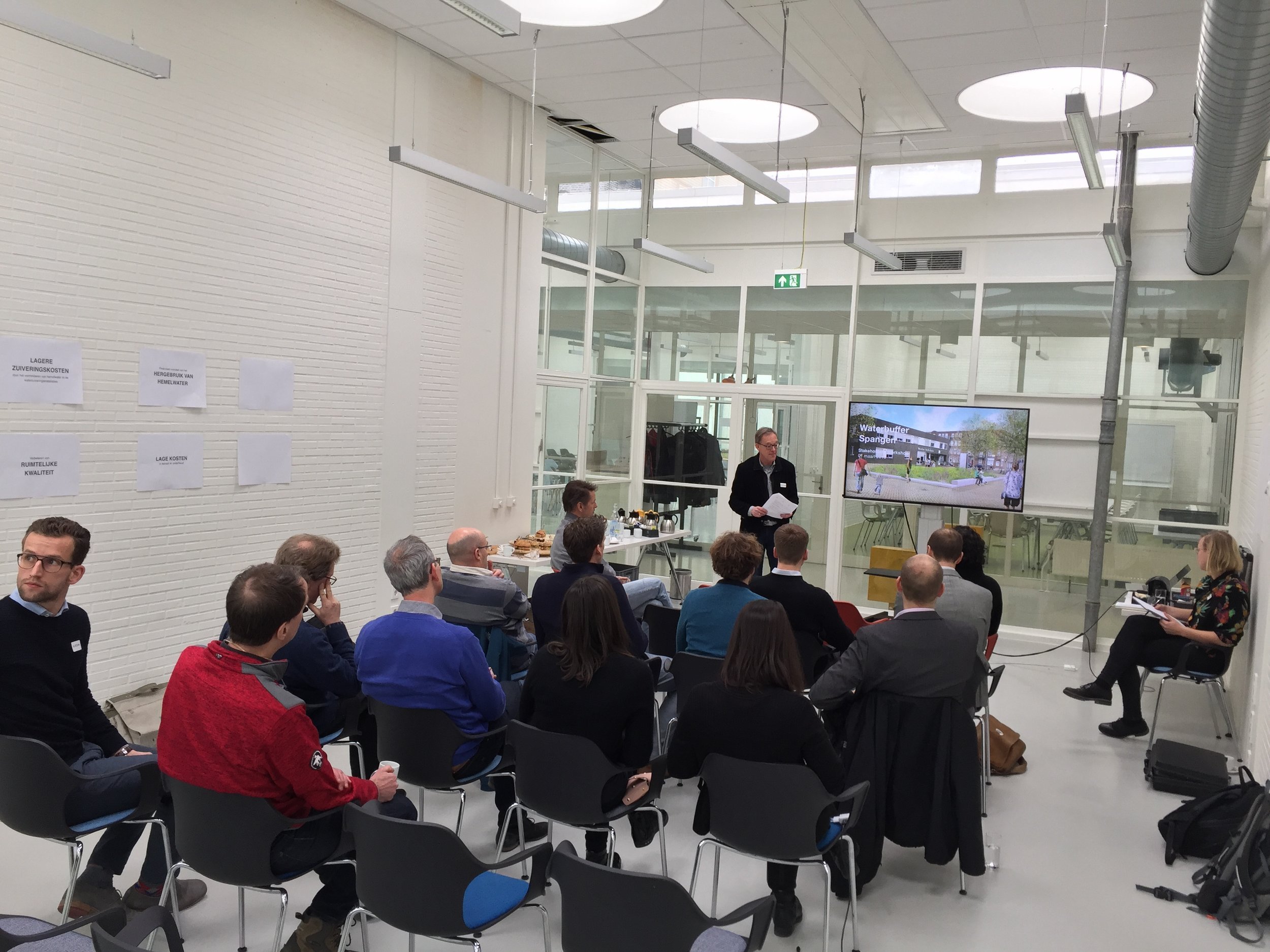Defining co-benefits of circular water management in Spangen
Stakeholders Workshop Urban Waterbuffer Spangen.
On the 1st of March, Field Factors, supported by CNR-IRSA Water research institute, hosted an interactive and inspiring Stakeholder Workshop to assess the effectiveness of the Urban Water Buffer project in Spangen, Rotterdam.
The Urban Water Buffer is a nature based solution to collect, filter, store and re-use stormwater for the irrigation of the sports field in the Sparta Stadium.
The workshop is part of the H2020-project NAIAD, in which the insurance value of ecosystems for water related risk mitigation is researched by a European consortium, through bridging science and practice in nine demo cases.
The Urban Water Buffer in Rotterdam is a particularly interesting case study, since the NBS will actually be implemented in the coming months. This provides NAIAD researchers with a valuable opportunity to assess the effectiveness of the NBS through a comparison of the current situation with the situation after realisation of the UWB. The Stakeholders Workshop aimed at defining indicators for the effectiveness of the Urban Water Buffer on which this comparison can be based.
Identification of Co-Benefits of the Urban Water Buffer
The core in the workshop was to define the direct and indirect benefits of the Urban Water Buffer and the ecosystem services it provides. Together with a wide variety of stakeholders, such as the municipality of Rotterdam, the Waterboard Delfland, the water utility Evides, Rijkswaterstaat, KWR Water, engineering company Wareco, VPDelta and NAIAD partner Deltares, no less than eleven co-benefits of the Urban Water Buffer have been identified. Examples of these co-benefits include the re-use of stormwater, spatial quality enhancement, increase of water-awareness among citizens, provision of cooling during hot days, increase of urban green, improve water quality, reduction of damage to building and infrastructure, etc. Based on an individual ranking of the co-benefits by each participant, three benefits were selected for further analysis in the second part of the workshop.
Spatial quality enhancement
Improve water quality
Increase water awareness
Actions and Indicators
All stakeholders acknowledge that in order to make the implementation of the Urban Water Buffer project successful, not only the technical aspects of the solution should be considered, but the “soft” co-benefits should be enforced as well. It was great to see that in the second part of the workshop, many implementable actions were defined that can support the exploitation of the expected co-benefits. For each of these actions, indicators were set on which the effectiveness of these actions can be assessed.
The results of the workshop are used for the economic assessment of the UWB as a risk mitigation measure within NAIAD. Additionally, the results are used in the implementation guide of the Urban Waterbuffer in order to support the upscaling of this nature based solution.




